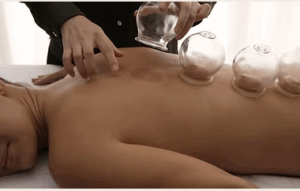In recent years, the world of cosmetic surgery has seen a notable shift as procedures once considered niche are now gaining mainstream attention. One such procedure is labiaplasty. Once confined to the shadows of elective surgery, labiaplasty is now widely discussed across social media, medical forums, and even pop culture. At the heart of this trend lies a blend of evolving beauty standards, increased body awareness, and medical advancements. Many women today are openly exploring options to improve comfort, aesthetics, and confidence, leading to a rise in interest in procedures like labia trimming for both cosmetic and functional reasons.
What Is Driving the Popularity of Labiaplasty?
There are several compelling reasons why more women are considering labiaplasty than ever before. The most obvious driver is increased exposure and awareness. With influencers, celebrities, and online platforms discussing intimate health and cosmetic choices more openly, the taboo surrounding vaginal aesthetics is rapidly fading. Women are now more empowered to make personal choices about their bodies, including pursuing surgery to address physical discomfort or dissatisfaction with appearance.
In addition to awareness, changing fashion trends have also played a role. Tight athletic wear, swimsuits, and lingerie often highlight the contours of the body in ways that weren’t as visible decades ago. As a result, some women may feel more self-conscious about the appearance of their labia, especially if they experience chafing or discomfort during daily activities or exercise. For these individuals, labiaplasty becomes more than a cosmetic decision—it’s about improving quality of life.
Psychological Empowerment and Body Confidence
While critics often label labiaplasty as a reflection of unrealistic beauty standards, many patients report feeling empowered by their decision. The narrative around plastic surgery is changing from one of superficiality to one of autonomy. Women are no longer shamed for wanting to feel comfortable in their own skin—regardless of the body part involved.
For many, the desire for labiaplasty comes after years of struggling with insecurity or discomfort. Whether it’s the result of childbirth, aging, or genetics, the physical changes in the vaginal area can cause emotional distress. By undergoing labiaplasty, some women reclaim a sense of control over their bodies, allowing them to feel more confident in intimate situations, at the gym, or simply while going about their day.
Moreover, medical professionals have begun recognizing the psychological impact of genital dissatisfaction. In several studies, women who underwent labiaplasty reported a significant boost in self-esteem, increased sexual satisfaction, and overall improvement in well-being. When the procedure is patient-driven and rooted in personal desire rather than societal pressure, the results can be deeply transformative.
Advancements in Surgical Techniques
Another reason for the surge in labiaplasty’s popularity lies in medical innovation. Surgeons today utilize more precise, minimally invasive techniques that drastically reduce downtime and scarring. Patients can expect quicker recovery periods, with many returning to work or light activities within a few days.
Procedures are also more personalized than ever. Surgeons work closely with patients to understand their goals, whether they’re focused on symmetry, reduction, or improved comfort. Local anesthesia options and advanced suturing techniques contribute to a safer, more comfortable experience overall. These improvements make the idea of labiaplasty less intimidating for first-time patients.
Furthermore, clinics are prioritizing education and aftercare, equipping patients with realistic expectations and proper guidance throughout the recovery journey. This transparency helps foster trust and encourages women to make informed decisions based on their individual needs.
Controversies and Cultural Conversations
Despite its growing popularity, labiaplasty remains a controversial subject. Critics argue that the procedure reinforces narrow beauty ideals and may cause women to seek surgery unnecessarily. Others question whether young women—especially teenagers—should have access to genital cosmetic surgery at all.
These concerns are not unfounded, but it’s important to strike a balance between caution and autonomy. Educating patients, especially younger ones, about anatomy, normal variation, and potential risks is essential. Surgeons have a responsibility to assess both the physical and emotional motivations behind the request for labiaplasty. When done ethically, the procedure can be an empowering choice rather than a harmful one.
Cultural narratives are also evolving. More voices in media and medicine are advocating for open conversations about genital diversity. Campaigns that celebrate the natural variety of vulvas are gaining traction, helping to reduce shame and misinformation. Even as labiaplasty becomes more popular, the push for body positivity and informed consent remains strong.
The Future of Labiaplasty: Choice Over Conformity
The increasing demand for labiaplasty doesn’t necessarily mean that all women want or need cosmetic surgery. What it does reflect is a growing willingness to talk openly about intimate health and aesthetic choices. As society becomes more accepting of personal agency, women feel more empowered to make decisions that enhance their well-being—whether that means embracing their bodies as they are or seeking changes that bring them greater comfort and confidence.
The future of labiaplasty lies in education, personalization, and empowerment. It’s not about fitting into a narrow mold but about expanding the dialogue to include all experiences. With the right support, women can explore their options in a way that prioritizes both physical health and emotional fulfillment.
As we move forward, it’s essential to ensure that the popularity of labiaplasty is guided by informed consent, ethical practices, and body-affirming conversations. When these elements are in place, cosmetic procedures like labiaplasty can become powerful tools for self-expression and personal comfort—not just fleeting trends in beauty culture.






